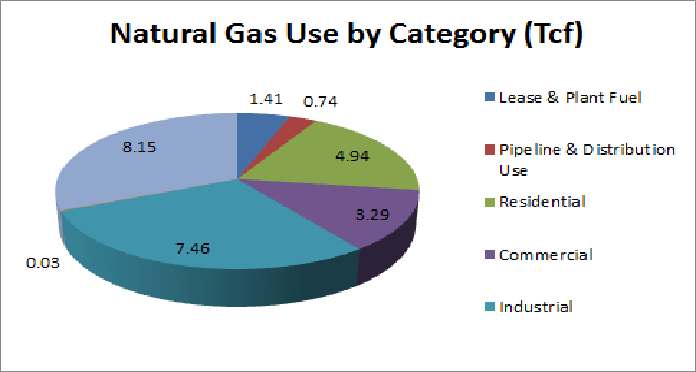
When it comes to the Marcellus Shale and natural gas, there is a lot of discussion about the production figures coming out of the Commonwealth. But what does all this production mean to Pennsylvania and the United States?
The Energy Information Agency (EIA) is the statistical arm of the U.S. Department of Energy that tracks and reports on energy usage throughout the United States.
When it comes to natural gas, the EIA tracks seven categories for utilization: lease and plant fuel, pipeline and distribution use, residential, commercial, industrial, power generation and transportation.
Lease, plant, pipeline and distribution use account for natural gas used in the drilling, processing, compression and transportation of natural gas. Power generation accounts for natural gas used in electricity generation in dedicated or combined heat and power (CHP) facilities that sell electricity to the public.
Residential uses is for gas used in private dwellings for mostly heating, cooking, water heaters and other household uses. Commercial use is gas used in non-manufacturing establishments primarily engaged in the sales of goods or services, such as hotels, schools, restaurants or retail outlets.
Industrial uses include manufacturing establishments that use gas for heat, power or chemical feedstock’s. This also includes natural gas used for onsite power or heat generation. Transportation accounts for natural gas used by vehicles in the form of LNG (liquid natural gas) or CNG (compressed natural gas).
With a greater abundance of natural gas and a relatively lower price when compared to other energy sources, the utilization of natural gas has increased over the last several years.
As a nation, the United States used 26.04 trillion cubic feet (TCF) in 2013 compared to 23.28 TCF in 2008 (12 percent increase). Power generation accounts for 31 percent of total natural gas consumption followed by industrial (29 percent), residential (19 percent) and commercial (13 percent).
Since 2008, consumption in the power generation sector has increased by nearly 1.5 TCF. During 2012, with natural gas prices at historic lows, coupled with higher coal prices, power generation hit a peak in consuming more than 9.1 TCF of natural gas.
In the Commonwealth, the readily available resource has aided in natural gas taking a larger share of power generation from coal. Since 2008, electric power generators have increased their consumption of natural gas from 141 BCF to 359 BCF in 2013.
E&P operators are also utilizing more natural gas in their operations from drilling, completion to midstream activities driving the utilization up to over 100 BCF annually. While the public interest in using natural gas as a transportation fuel has grown, actual consumption has only seen a limited increase from 290 MMcf in 2008 to 332 MMcf last year.
As the public dialogue continues to grow around the utilization of natural gas, Penn State University, America’s Natural Gas Alliance and the Shale Gas Innovation and Commercialization Center are hosting the fourth annual Natural Gas Utilization Conference.
The conference will discuss the current trends, opportunities and challenges around each of the uses for natural gas and include extensive information around exporting natural gas as LNG. The conference will be held in Southpointe at the Hilton Garden Inn on Oct. 14-15.
More than 25 professionals will share their views during the two-day conference that allows plenty of networking and exhibit time for anyone interested in natural gas. There will also be a NGVE (natural gas vehicle and equipment) event open to the public to see the latest technologies being employed in small scale power generation, vehicle transportation and how natural gas plays a role in day-to-day life.
More information about the event can be found at www.2014utilization.org.